Maternal postures for fetal malposition in labour for improving the health of mothers and their infants
- PMID: 36043437
- PMCID: PMC9428893
- DOI: 10.1002/14651858.CD014615
Maternal postures for fetal malposition in labour for improving the health of mothers and their infants
Abstract
Background: Fetal malposition (occipito-posterior and persistent occipito-transverse) in labour is associated with adverse maternal and infant outcomes. Whether use of maternal postures can improve these outcomes is unclear. This Cochrane Review of maternal posture in labour is one of two new reviews replacing a 2007 review of maternal postures in pregnancy and labour.
Objectives: To assess the effect of specified maternal postures for women with fetal malposition in labour on maternal and infant morbidity compared to other postures. SEARCH METHODS: We searched Cochrane Pregnancy and Childbirth's Trials Register, ClinicalTrials.gov, the World Health Organization (WHO) International Clinical Trials Registry Platform (ICTRP) (13 July 2021), and reference lists of retrieved studies.
Selection criteria: We included randomised controlled trials (RCTs) or cluster-RCTs conducted among labouring women with a fetal malposition confirmed by ultrasound or clinical examination, comparing a specified maternal posture with another posture. Quasi-RCTs and cross-over trials were not eligible for inclusion.
Data collection and analysis: Two review authors independently assessed trials for inclusion, risk of bias, and performed data extraction. We used mean difference (MD) for continuous variables, and risk ratios (RRs) for dichotomous variables, with 95% confidence intervals (CIs). We assessed the certainty of the evidence using the GRADE approach.
Main results: We included eight eligible studies with 1766 women. All studies reported some form of random sequence generation but were at high risk of performance bias due to lack of blinding. There was a high risk of selection bias in one study, detection bias in two studies, attrition bias in two studies, and reporting bias in two studies. Hands and knees The use of hands and knees posture may have little to no effect on operative birth (average RR 1.14, 95% CI 0.87 to 1.50; 3 trials, 721 women; low-certainty evidence) and caesarean section (RR 1.34, 95% CI 0.96 to 1.87; 3 trials, 721 women; low-certainty evidence) but the evidence is uncertain; and very uncertain for epidural use (average RR 0.74, 95% CI 0.41 to 1.31; 2 trials, 282 women; very low-certainty evidence), instrumental vaginal birth (average RR 1.04, 95% CI 0.57 to 1.90; 3 trials, 721 women; very low-certainty evidence), severe perineal tears (average RR 0.88, 95% CI 0.03 to 22.30; 2 trials, 586 women; very low-certainty evidence), maternal satisfaction (average RR 1.02, 95% CI 0.68 to 1.54; 3 trials, 350 women; very low-certainty evidence), and Apgar scores less than seven at five minutes (RR 0.71, 95% CI 0.21 to 2.34; 2 trials, 586 babies; very low-certainty evidence). No data were reported for the hands and knees comparisons for postpartum haemorrhage, serious neonatal morbidity, death (stillbirth or death of liveborn infant), admission to neonatal intensive care, neonatal encephalopathy, need for respiratory support, and neonatal jaundice requiring phototherapy. Lateral postures The use of lateral postures may have little to no effect on reducing operative birth (average RR 0.72, 95% CI 0.43 to 1.19; 4 trials, 871 women; low-certainty evidence), caesarean section (average RR 0.78, 95% CI 0.44 to 1.39; 4 trials, 871 women; low-certainty evidence), instrumental vaginal birth (average RR 0.73, 95% CI 0.39 to 1.36; 4 trials, 871 women; low-certainty evidence), and maternal satisfaction (RR 0.96, 95% CI 0.84 to 1.09; 2 trials, 451 women; low-certainty evidence), but the evidence is uncertain. The evidence is very uncertain about the effect of lateral postures on severe perineal tears (RR 0.66, 95% CI 0.17 to 2.48; 3 trials, 609 women; very low-certainty evidence), postpartum haemorrhage (RR 0.90, 95% CI 0.48 to 1.70; 1 trial, 322 women; very low-certainty evidence), serious neonatal morbidity (RR 1.41, 95% CI 0.64 to 3.12; 3 trials, 752 babies; very low-certainty evidence), Apgar scores less than seven at five minutes (RR 0.25, 95% CI 0.03 to 2.24; 1 trial, 322 babies; very low-certainty evidence), admissions to neonatal intensive care (RR 1.41, 95% CI 0.64 to 3.12; 2 trials, 542 babies; very low-certainty evidence) and neonatal death (stillbirth or death of liveborn) (1 trial, 210 women and their babies; no events). For the lateral posture comparisons, no data were reported for epidural use, neonatal encephalopathy, need for respiratory support, and neonatal jaundice requiring phototherapy. We were not able to estimate the outcome death (stillbirth or death of liveborn infant) due to no events (1 trial, 210 participants). AUTHORS' CONCLUSIONS: We found low- and very low-certainty evidence which indicated that the use of hands and knees posture or lateral postures in women in labour with a fetal malposition may have little or no effect on health outcomes of the mother or her infant. If a woman finds the use of hands and knees or lateral postures in labour comfortable there is no reason why they should not choose to use them. Further research is needed on the use of hands and knees and lateral postures for women with a malposition in labour. Trials should include further assessment of semi-prone postures, same-side-as-fetus lateral postures with or without hip hyperflexion, or both, and consider interventions of longer duration or that involve the early second stage of labour.
Copyright © 2022 The Cochrane Collaboration. Published by John Wiley & Sons, Ltd.
Conflict of interest statement
Jennifer Barrowclough: reports receiving a student scholarship from the Liggins Institute, University of Auckland, funds from Shundi Group Ltd, and funds from Work Force New Zealand education grant.
Caroline Crowther: has declared no conflict of interest.
Bridget Kool: has declared no conflict of interest
Luling Lin: has declared no conflict of interest.
Justus Hofmeyr: reports being an Associate Editor for Cochrane Pregnancy Childbirth, and reports no involvement in the editorial processing of this review. Reports receiving consulting fees and royalties unrelated to this topic.
Figures

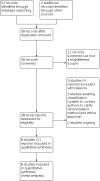
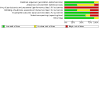


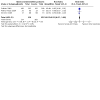
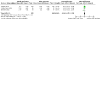
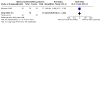
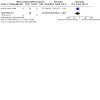
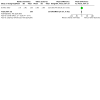
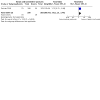
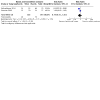
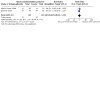
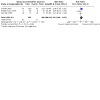
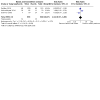
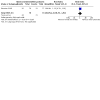
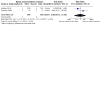
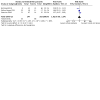
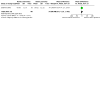
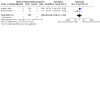
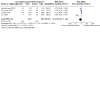
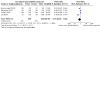
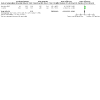
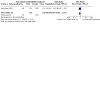
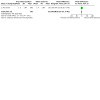

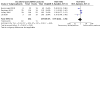
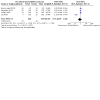

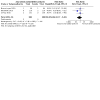
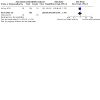
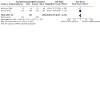
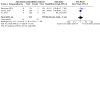
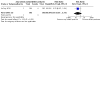
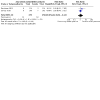
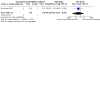
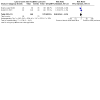
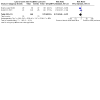
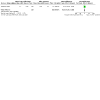
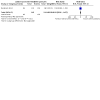
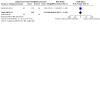
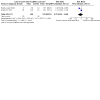
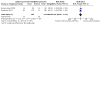
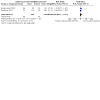
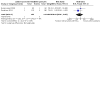
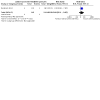
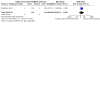
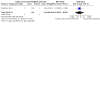

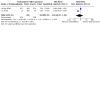
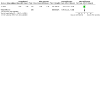
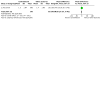
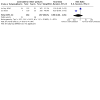
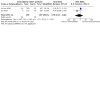


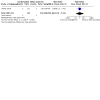
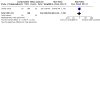

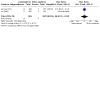
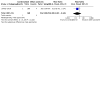
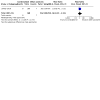
Similar articles
-
Assessment and support during early labour for improving birth outcomes.Cochrane Database Syst Rev. 2017 Apr 20;4(4):CD011516. doi: 10.1002/14651858.CD011516.pub2. Cochrane Database Syst Rev. 2017. PMID: 28426160 Free PMC article.
-
Induction of labour for improving birth outcomes for women at or beyond term.Cochrane Database Syst Rev. 2018 May 9;5(5):CD004945. doi: 10.1002/14651858.CD004945.pub4. Cochrane Database Syst Rev. 2018. Update in: Cochrane Database Syst Rev. 2020 Jul 15;7:CD004945. doi: 10.1002/14651858.CD004945.pub5. PMID: 29741208 Free PMC article. Updated.
-
Fundal pressure during the second stage of labour.Cochrane Database Syst Rev. 2017 Mar 7;3(3):CD006067. doi: 10.1002/14651858.CD006067.pub3. Cochrane Database Syst Rev. 2017. PMID: 28267223 Free PMC article.
-
Epidural versus non-epidural or no analgesia for pain management in labour.Cochrane Database Syst Rev. 2018 May 21;5(5):CD000331. doi: 10.1002/14651858.CD000331.pub4. Cochrane Database Syst Rev. 2018. PMID: 29781504 Free PMC article.
-
Position in the second stage of labour for women with epidural anaesthesia.Cochrane Database Syst Rev. 2017 Feb 24;2(2):CD008070. doi: 10.1002/14651858.CD008070.pub3. Cochrane Database Syst Rev. 2017. Update in: Cochrane Database Syst Rev. 2018 Nov 09;11:CD008070. doi: 10.1002/14651858.CD008070.pub4. PMID: 28231607 Free PMC article. Updated.
Cited by
-
Pregnant women's views on the acceptability, enablers, and barriers of participation in a randomized controlled trial of maternal posture for fetal malposition in labor.Eur J Midwifery. 2022 Jan 28;6:4. doi: 10.18332/ejm/144057. eCollection 2022. Eur J Midwifery. 2022. PMID: 35128346 Free PMC article.
-
Informational video on preoperative anxiety and postoperative satisfaction prior to elective cesarean delivery: a systematic review and meta-analysis.BMC Psychol. 2024 Jan 2;12(1):6. doi: 10.1186/s40359-023-01499-3. BMC Psychol. 2024. PMID: 38167236 Free PMC article.
-
The effects of warm perineal compress on perineal trauma and postpartum pain: a systematic review with meta-analysis and trial sequential analysis.Arch Gynecol Obstet. 2024 Mar;309(3):843-869. doi: 10.1007/s00404-023-07195-2. Epub 2023 Aug 26. Arch Gynecol Obstet. 2024. PMID: 37632600
-
Maternal postures for fetal malposition in late pregnancy for improving the health of mothers and their infants.Cochrane Database Syst Rev. 2024 Feb 8;2(2):CD014616. doi: 10.1002/14651858.CD014616. Cochrane Database Syst Rev. 2024. PMID: 38329185 Free PMC article.
-
Midwives' views on the acceptability of a future trial of the Sims posture for fetal malposition in labor in the context of their knowledge and practice: A mixed-methods study.Eur J Midwifery. 2022 Aug 1;6:50. doi: 10.18332/ejm/150377. eCollection 2022. Eur J Midwifery. 2022. PMID: 35974715 Free PMC article.
References
References to studies included in this review
Bahmaei 2018 {published data only}
-
- Bahmaei K, Iravani M, Moosavi P, Haghighizadeh MH. Effect of maternal positioning with occipito-posterior fetal position during labor on pain intensity and satisfaction of mothers. Iranian Journal of Obstetrics, Gynecology and Infertility 2018;21(5):66-73. [CENTRAL: CN-01645940] [EMBASE: 623723760]
-
- IRCT2017082111360N3. The efficacy of maternal position in labor to correct occipito-posterior fetal position and delivery outcome. www.who.int/trialsearch/Trial2.aspx?TrialID=IRCT2017082111360N3 (first received 13 November 2017). [CENTRAL: CENTRAL: CN-01896062]
Bueno‐Lopez 2018 {published data only}
-
- Bueno-Lopez V, Fuentelsaz-Gallego C, Casellas-Caro M, Falgueras-Serrano AM, Crespo-Berros S, Silvano-Cocinero AM, et al. Efficiency of the modified Sims maternal position in the rotation of persistent occiput posterior position during labor: a randomized clinical trial. Birth: Issues in Perinatal Care 2018;45(4):385-92. [CENTRAL: CN-01667845] [EMBASE: 624963359] [PMID: ] - PubMed
-
- NCT02209090. Modified intrapartum sims position-related efficiency in correction of persistent foetal OP position [Randomised clinical trial: modified intrapartum maternal sims position-related efficiency in the correction of persistent foetal occipito-posterior position]. clinicaltrials.gov/show/NCT02209090 (first received 2 July 2014). [CENTRAL: CN-02025768]
Desbriere 2013 {published data only}
-
- Desbriere R, Blanc J, Le Du R, Renner JP, Carcopino X, Loundou A, et al. Is maternal posturing during labor efficient in preventing persistent occiput posterior position? A randomized controlled trial. American Journal of Obstetrics and Gynecology 2013;208(1):60.e1-8. [CENTRAL: CN-00862750] [PMID: ] - PubMed
Guittier 2016 {published data only}
-
- Guittier MJ, Othenin-Girard V, Gasquet B, Irion O, Boulvain M. Authors' reply re: maternal positioning to correct occiput posterior fetal position during the first stage of the labour: a randomised controlled trial. BJOG: an international journal of obstetrics and gynaecology 2017;124(7):1124. - PubMed
-
- Guittier MJ, Othenin-Girard V, Gasquet B, Irion O, Boulvain M. Maternal positioning to correct occiput posterior fetal position during the first stage of labour: a randomised controlled trial. BJOG: an international journal of obstetrics and gynaecology 2016;123(13):2199-207. [CENTRAL: CN-01264392] [PMID: ] - PMC - PubMed
-
- NCT01291355. Maternal positioning and occipitoposterior fetal position. clinicaltrials.gov/show/NCT01291355 (first received 7 February 2011). [CENTRAL: CN-02026525]
-
- Suzuki S. Re: maternal positioning to correct occiput posterior fetal position during the first stage of the labour: a randomised controlled trial. BJOG: an international journal of obstetrics and gynaecology 2017;124(7):1123-4. [EMBASE: 616364611] - PubMed
Le Ray 2016 {published data only}
-
- Blanc-Petitjean P, Le Ray C, Lepleux F, De La Calle A, Dreyfus M, Chantry AA. Factors affecting rotation of occiput posterior position during the first stage of labor. Journal of Gynecology Obstetrics and Human Reproduction 2018;47(3):119-25. [CENTRAL: CN-01627539] [PMID: ] - PubMed
-
- Le Ray C, Lepleux F, De La Calle A, Guerin J, Sellam N, Dreyfus M, et al. Lateral asymmetric decubitus for rotation of occiput posterior position: multicenter randomized controlled trial EVADELA. American Journal of Obstetrics and Gynecology 2016b;214(1 Suppl):S335-S336. [CENTRAL: CN-01134796] [EMBASE: 72164820] - PubMed
-
- Le Ray C, Lepleux F, De La Calle A, Guerin J, Sellam N, Dreyfus M, et al. Lateral asymmetric decubitus position for the rotation of occipito-posterior positions: multicenter randomized controlled trial EVADELA. American Journal of Obstetrics and Gynecology 2016;215(4):511.e1-7. [CENTRAL: CN-01368865] [PMID: ] - PubMed
-
- NCT01854450. Evaluation of asymmetrical lateral decubitus for rotation of occipitoposterior fetal position [Evaluation of asymmetrical lateral decubitus for rotation of occipitoposterior fetal position during labor: EVADELA multicentre randomized trial]. clinicaltrials.gov/show/NCT01854450 (first received 13 May 2013). [CENTRAL: CN-01542175]
Liu 2018 {published data only}
-
- Liu L-P, Chen J-H, Yang Z-J, Zhu J. Corrective effects of maternal extreme flexure and hip abduction combined with contralateral side-lying on persistent foetal occipito-posterior position. International Journal of Nursing Practice 2018;24(5):e12663. [CENTRAL: CN-01651307] - PubMed
Molina‐Reyes 2014 {published data only}
-
- Molina Reyes C, Munoz Martinez AL, Herrera Cabrerizo B, Berral Gutierrez MA, Moore T, Alcantara Lopez C. Investigation project: the efficacy of the intervention of maternal position during labor to change a persistent occipitoposterior fetal position. Journal of Maternal-fetal & Neonatal Medicine 2010;23(S1):279-80. [CENTRAL: CN-00794281]
-
- Molina Reyes CY, Berral Gutierrez A, Huete Morales D, Martinez Garcia E, Castellano Ibanez FD. Maternal satisfaction in the clinical trial ‘the efficacy of maternal posturing during labor on the prevention of fetal occiput posterior position' [Satisfacción materna en el ensayo clínico "Eficacia de la postura materna en partos con malj fetal occipitoposterior”]. Metas de Enfermeria 2013;16(9):60-7.
-
- Molina-Reyes CY, Martinez-Garcia E, Huete-Morales MD, Munoz-Martinez AL, Maldonado-Molina E, Molina-Cubero L. Maternal comfort and pain reduction for women in labour with fetal occiput-posterior position by using lateral decubitus and hands and knees postures: a randomised clinical trial [Comodidad materna y reduccion del dolor en mujeres con posicion fetal occipitoposterior durante el parto con el uso de las posturas de decubito lateral y manos-rodillas: ensayo clinico aleatorizado]. Matronas Profesion 2013;14(1):3-9. [CENTRAL: CN-02135242]
-
- Molina-Reyes CY, Muňoz-Martínez AL, Martínez-García E, Moore TL, Huete-Morales MD, Burgos-Sánchez JA. Eficacia de la postura materna manos-rodillas para corregir la posición fetal occipitoposterior en el parto. Index de Enfermería 2014;23(1/2):15-20.
Stremler 2005 {published and unpublished data}
-
- Stremler R, Hodnett E, Petryshen P, Stevens B, Weston J, Willan AR. Randomized controlled trial of hands-and-knees positioning for occipitoposterior position in labor. Birth (Berkeley, Calif.) 2005;32(4):243-51. [CENTRAL: CN-00553411] [PMID: ] - PubMed
-
- Stremler R. The Labour Position Trial: A Randomized, Controlled Trial of Hands and Knees Positioning for Women Labouring with a Fetus in Occipitoposterior Position [Thesis]. Toronto (Canada): University of Toronto, 2003.
References to studies excluded from this review
Andrews 1981 {published data only}
-
- Andrews CM. Nursing intervention to change a malpositioned fetus. Advances in Nursing Science 1981;3:53-66. [CENTRAL: CN-00230276] - PubMed
Kariminia 2004 {published data only}
-
- Kariminia A, Keogh J, Chamberlain M. The effect of hands and knees exercise on the incidence of OP position at birth. In: Perinatal Society of Australia and New Zealand 7th Annual Congress; 2003 March 9-12; Tasmania, Australia. 2003. [CENTRAL: CN-00433437]
Zhang 2017 {published data only}
-
- Zhang H, Huang S, Guo X, Zhao N, Lu Y, Chen M, et al. A randomised controlled trial in comparing maternal and neonatal outcomes between hands-and-knees delivery position and supine position in China. Midwifery 2017;50:117-24. [CENTRAL: CN-01600517] [EMBASE: 621962182] [PMID: ] - PubMed
References to studies awaiting assessment
Lu 2001 {published data only}
-
- Lu JX, Li HX, Shu BL. Clinical observation of lateral-prostrate position preventing persistent OP/OT position. Journal of Nursing Science 2001;16(3):136-7. [CENTRAL: CN-00601229]
Ou 1997 {published data only}
-
- Ou X, Chen X, Su J. Correction of occipito-posterior position by maternal posture during the process of labor. Zhonghua Fu Chan Ke za Zhi [Chinese Journal of Obstetrics and Gynecology] 1997;32(6):329-32. [CENTRAL: CN-00150937] [PMID: ] - PubMed
Wu 2001 {published data only}
-
- Wu X, Fan L, Wang Q. Correction of occipito-posterior by maternal postures during the process of labor. Zhonghua Fu Chan Ke za Zhi [Chinese Journal of Obstetrics and Gynecology] 2001;36(8):468-9. [CENTRAL: CN-00406800] [PMID: ] - PubMed
Additional references
Aiken 2015
Akmal 2003
Akmal 2004
Allman 1996
-
- Allman AC, Genevier ES, Johnson MR, Steer PJ. Head-to-cervix force: an important physiological variable in labour. 2. Peak active force, peak active pressure and mode of delivery. British Journal of Obstetrics and Gynaecology 1996;103(8):769-75. [DOI: 10.1111/j.1471-0528.1996.tb09871.x] - DOI - PubMed
Anderson 1965
Andrews 2004
Ashwal 2016
Ayers 2001
Barbier 2007
Barth 2015
Blumenthal 1982
-
- Blumenthal NJ, Merrell DA, Langer O. Obstetrics in the very young black South African teenager. South African Medical Journal 1982;61(14):518-20. [www.ncbi.nlm.nih.gov/pubmed/7064033] - PubMed
Boog 2006
Carlisle 2017
-
- Carlisle JB. Data fabrication and other reasons for non-random sampling in 5087 randomised, controlled trials in anaesthetic and general medical journals. Anaesthesia 2017;72(8):944-52. [DOI: ] - PubMed
Cheng 2006a
Cheng 2006b
Cheng 2006c
Cunningham 2018
-
- Cunningham FG, Leveno KJ, Bloom SL, Dashe JS, Hoffman BL, Casey BM, et al. Williams Obstetrics. 25th edition. New York: McGraw-Hill Education, 2018.
de la Torre 2006
Doggett 1967
Dudding 2008
Eggebo 2015
El‐Mowafi 2017
-
- El-Mowafi DM. Maternal changes due to pregnancy. In: Campana A, editors(s). Obstetrics Simplified. Geneva: GMFR Geneva Foundation For Medical Education and Research, 2017.
Fitzpatrick 2001
Gardberg 1994
Gardberg 1998
Ghi 2016
Gilboa 2013
GRADEpro GDT [Computer program]
-
- GRADEpro GDT. Version accessed 1 December 2021. Hamilton (ON): McMaster University (developed by Evidence Prime). Available at gradepro.org.
Higgins 2011
-
- Higgins JP, Green S, editor(s. Cochrane Handbook for Systematic Reviews of InterventionsVersion 5.1.0 (updated March 2011). The CochraneCollaboration, 2011. Available from training.cochrane.org/handbook/archive/v5.1/.
Higgins 2021
-
- Higgins JP, Thomas J, Chandler J, Cumpston M, Li T, Page MJ, et al (editors). Cochrane Handbook for Systematic Reviews of Interventions Version 6.2 (updated February 2021). Cochrane 2021. Available from www.training.cochrane.org/handbook 2021.
Higgins 2022
-
- Higgins JPT, Eldridge S, Li T (editors) . Chapter 23: Including variants on randomized trials. In: Higgins JPT, Thomas J, Chandler J, Cumpston M, Li T, Page MJ, Welch VA (editors). Cochrane Handbook for Systematic Reviews of Interventions version 6.3 (updated February 2022). Cochrane, 2022 . Available from www.training.cochrane.org/handbook.
Hodnett 1987
Hodnett 2013
Ingemarsson 1980
Kjaergaard 2008
Kutcipal 1959
-
- Kutcipal RA. The persistent occiput posterior position: a review of 498 cases. Obstetrics and Gynecology 1959;14:296-304. [www.ncbi.nlm.nih.gov/pubmed/14412967] - PubMed
Lee 2021
Levy 2021
Lieberman 2005
Liljestrom 2018
Lydon‐Rochelle 2001
-
- Lydon‐Rochelle MT, Holt VL, Martin DP. Delivery method and self‐reported postpartum general health status among primiparous women. Journal of Paediatric Perinatal Epidemiology 2001;15(3):232-40. [ISSN 0269-5022] - PubMed
Martins 2011
Menichini 2021
Orlovic 2017
Parente 2009
-
- Parente MP, Jorge RM, Mascarenhas T, Fernandes AA, Martins JA. The influence of an occipito-posterior malposition on the biomechanical behavior of the pelvic floor. European Journal of Obstetrics, Gynecology, and Reproductive Biology 2009;144(Suppl 1):166-9. [DOI: 10.1016/j.ejogrb.2009.02.033] - DOI - PubMed
Phipps 2014
-
- Phipps H, Hyett JA, Graham K, Carseldine WJ, Tooher J, Vries B. Is there an association between sonographically determined occipito-transverse position in the second stage of labor and operative delivery? Acta Obstetricia et Gynecologica Scandinavica 2014;93(10):1018-24. [DOI: 10.1111/birt.12094] - DOI - PubMed
Ponkey 2003
Randal 1952
-
- Randal JH. The persistent occiput posterior. Journal of Iowa State Medical Society 1952;42:148-51. [www.ncbi.nlm.nih.gov/pubmed/14917902] - PubMed
Review Manager 2014 [Computer program]
-
- Review Manager 5 (RevMan 5). Version 5.3. Copenhagen: The Nordic Cochrane Centre, The Cochrane Collaboration, 2014.
Robinson 1996
Schünemann 2013
-
- Schünemann H, Brożek J, Guyatt G, Oxman A, editor(s). Handbook for grading the quality of evidence and the strength of recommendations using the GRADE approach (updated October 2013). GRADE Working Group, 2013. Available from gdt.guidelinedevelopment.org/app/handbook/handbook.html.
Senécal 2005
Sherer 2002
-
- Sherer DM, Miodovnik M, Bradley KS, Langer O. Intrapartum fetal head position I: comparison between transvaginal digital examination and transabdominal ultrasound assessment during the active stage of labor. Ultrasound in Obstetrics and Gynecology 2002;19(3):258-63. [DOI: 10.1046/j.1469-0705.2002.00641.x] - DOI - PubMed
Sokol 1981
-
- Sokol RJ. Occiput posterior position and fetal heart rate patterns. Obstetrics and Gynecology 1981;57(2):266-7. - PubMed
Souka 2003
Stremler 2003
-
- Stremler RL. The Labour Position Trial: A Randomized, Controlled Trial of Hands and Knees Positioning for Women Labouring with a Fetus in Occipitoposterior Position [Thesis]. Toronto (Canada): University of Toronto, 2003. [search.ebscohost.com/login.aspx?direct=true&db=jlh&AN=109843601&...
Suonio 1986
Sutton 2000
-
- Sutton J. Occiput-posterior positioning and some ideas about how to change it! Practising Midwife 2000;3(6):20-2. [ISSN: 1461-3123] - PubMed
Wijma 1997
World Health Organization 1996
-
- World Health Organization (WHO). Care in normal birth: a practical guide; 1996. Report of a Technical Working Group. Report No.: WHO/FRH/MSM/96.24. Available at: cdn1.sph.harvard.edu/wp-content/uploads/sites/2413/2014/08/WHO_FRH_MSM_9... (accessed prior to 27 July 2022). [WHO/FRH/MSM/96.24]
Zahalka 2005
-
- Zahalka N, Sadan O, Malinger G, Liberati M, Boaz M, Glezerman M, et al. Comparison of transvaginal sonography with digital examination and transabdominal sonography for the determination of fetal head position in second stage of labour. American Journal of Obstetrics and Gynecology 2005;193(2):381-6. [DOI: 10.1016/j.ajog.2004.12.011] - DOI - PubMed
References to other published versions of this review
Barrowclough 2019
-
- Barrowclough J, Kool B, Hofmeyr GJ, Crowther C . Maternal postures for fetal malposition in labour for improving the health of mothers and their infants. PROSPERO 2021 CRD42021214341 Available from: www.crd.york.ac.uk/prospero/display_record.php?ID=CRD42021214341. - PMC - PubMed
Publication types
MeSH terms
LinkOut - more resources
Full Text Sources
Medical

